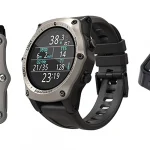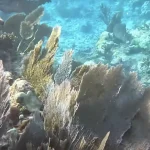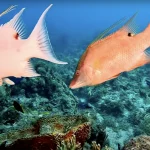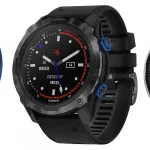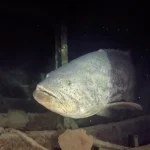Table of Contents
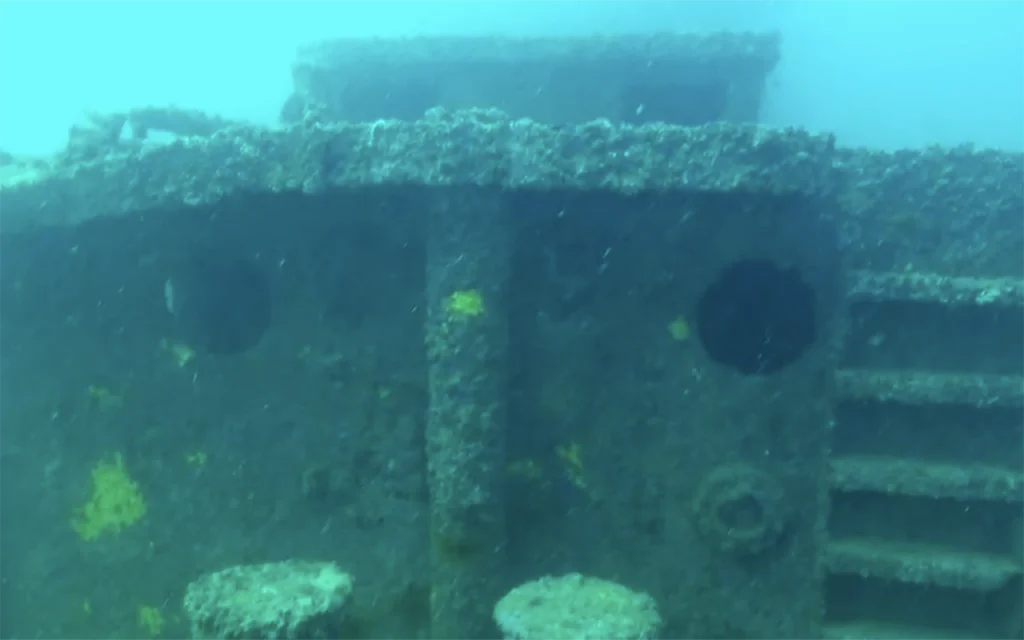
The MV Janet offers a unique blend of accessibility, purpose-built design for marine life enhancement, and a recreational focus that distinguishes it from many other shipwrecks in Florida, particularly those with historical significance or deeper depths.
Article at a Glance
- Artificial Reef Creation: Sunk in 1997, the MV Janet was intentionally deployed as an artificial reef to enhance marine biodiversity and provide a habitat for aquatic life.
- Diverse Marine Life: The wreck is home to various species, including snapper, grouper, lionfish, and moray eels, making it an exciting site for divers to observe vibrant underwater ecosystems.
- Accessible Depth: Located at a depth of 93 feet, the MV Janet is accessible to divers of varying skill levels, with swim-through opportunities that enhance the diving experience.
- Safety Measures: A waterproof dive card provides essential information on navigation, difficulty ratings, and marine life, ensuring divers are well-prepared for their adventure.
- Local Dive Shops: Several dive shops, including Shark Quest Dive Shop, Emerald Coast Scuba, and ScubaTech, offer guided trips to the MV Janet, providing equipment rentals and safety briefings.
- Historical Features: The wreck features identifiable structural elements and serves as a testament to modern conservation efforts, contrasting with many historical wrecks that resulted from accidents.
- Community Impact: The MV Janet contributes to local tourism and the economy by attracting recreational divers, promoting marine conservation, and enhancing the underwater experience in the Florida Panhandle.
Shipwreck Location Coordinates and Depth
Depth
The MV Janet rests at a depth of 93 feet, which is accessible for recreational divers.
Location Coordinates
The wreck is located at coordinates 30° 15.8394’ N and 086° 23.1048’ W.
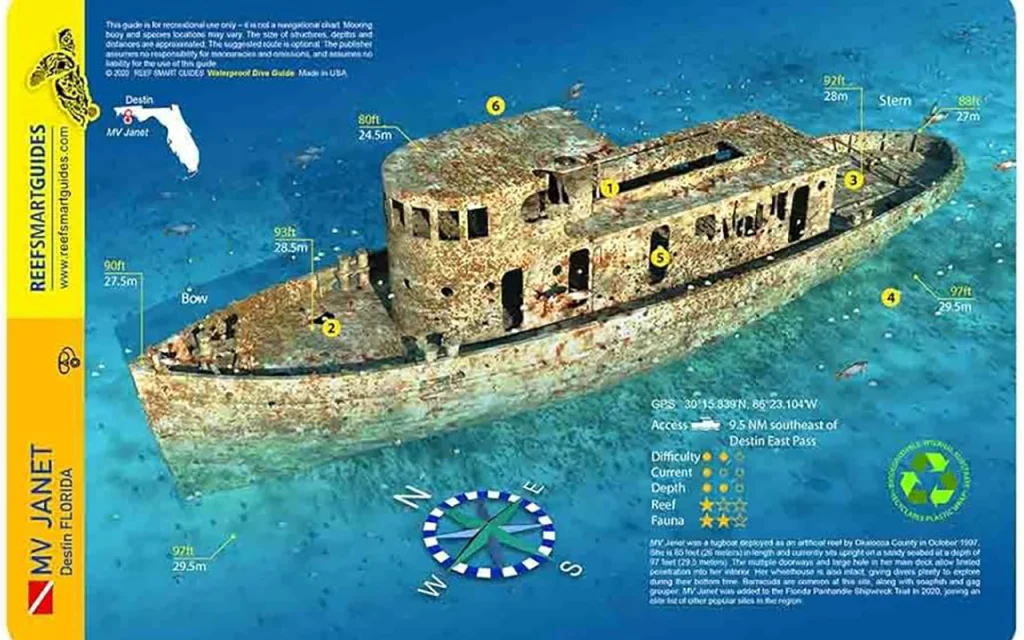
What Do Scuba Divers Say About The MV Janet
- Artificial Reef: The MV Janet was intentionally sunk in October 1997 to create an artificial reef. Divers appreciate this initiative as it enhances marine biodiversity and provides new habitats for aquatic life.
- Diving Experience: The wreck is reported to be an appealing dive site due to its relatively accessible depth, which allows divers of varying skill levels to explore. It features a suggested navigation path and depth information, making it easier for divers to plan their dives effectively.
- Marine Life: Divers often note the diverse marine species that inhabit the wreck. The waterproof dive card for the MV Janet includes images of six key species likely to be found at the site, enhancing the diving experience by helping divers identify local fauna.
- Difficulty Ratings: The site provides ratings on various factors such as difficulty, current, and depth, which divers find helpful for assessing their readiness and planning their dives.
What Kind of Marine Life Can Be Found on The Ship
- Snapper: A common sight around the wreck, these fish are often found in schools and are known for their vibrant colors.
- Grouper: These larger fish are typically seen resting on or near the wreck, providing an exciting sight for divers.
- Lionfish: Known for their striking appearance and venomous spines, lionfish are often found in reef environments, including artificial reefs like the MV Janet.
- Moray Eels: These eels can often be spotted hiding in crevices of the wreck, adding to the biodiversity of the site.
- Tropical Fish: A variety of smaller tropical fish inhabit the area, contributing to the vibrant underwater ecosystem.
- Crustaceans: Various species of crabs and shrimp can also be found around the wreck, playing a role in the marine food web.
Key Information
| Feature | Details |
|---|---|
| Name | MV Janet |
| Type | Steel Tugboat |
| Length | 85 feet |
| Depth | 93 feet |
| Relief | 30 feet |
| Location | Okaloosa County, Florida |
| Coordinates | 30° 15.8394’ N, 086° 23.1048’ W |
| Sinking Date | October 1, 1997 |
| Purpose | Artificial Reef |
| Accessibility | Suitable for divers of varying skill levels |
| Marine Life | Snapper, Grouper, Lionfish, Moray Eels, Tropical Fish |
| Dive Resources | Waterproof dive card with navigation and marine life information |
| Local Dive Shops | Shark Quest Dive Shop, Emerald Coast Scuba, ScubaTech, Dive Pros |
What Makes The MV Janet a Unique Diving Experience
- Artificial Reef Creation: Sunk in October 1997, the MV Janet was intentionally deployed as an artificial reef off the coast of Okaloosa County. This initiative not only enhances marine biodiversity but also provides a habitat for various species, making it an attractive site for divers interested in underwater ecosystems.
- Diverse Marine Life: The wreck is home to a variety of marine species, including snapper, grouper, lionfish, moray eels, and various tropical fish. The presence of these species adds excitement and educational value to dives, as divers can observe and identify different forms of marine life in their natural habitat.
- Navigational Aids: A waterproof dive card is available that includes important depth information, a suggested navigation path, and 3D-rendered images of the wreck. This resource aids divers in planning their dives and enhances their overall experience by providing a structured approach to exploring the site.
- Accessibility: The MV Janet is located at a depth that is accessible to divers of varying skill levels. This makes it an excellent site for both novice and experienced divers, allowing a wider range of individuals to enjoy the underwater exploration.
- Detailed Dive Ratings: The dive card also includes ratings on the level of difficulty, current, depth, and the types of fauna present. This information helps divers assess their readiness and choose the best conditions for their dives, ensuring a safer and more enjoyable experience.
How Does The MV Janet Compare to Other Shipwrecks in Florida
- Purpose and Design: Unlike many historical shipwrecks that resulted from accidents or warfare, the MV Janet was intentionally sunk in 1997 to create an artificial reef. This purpose enhances marine biodiversity and offers divers a structured environment to explore, making it particularly appealing for recreational divers, including novices.
- Accessibility: The MV Janet rests at a depth of 93 feet, which is accessible for recreational divers. This depth, combined with its upright position and 30 feet of relief, allows for swim-through opportunities, making it a more engaging dive site compared to deeper wrecks that may require advanced diving skills.
- Marine Life: The MV Janet is known for its vibrant marine life, including species like snapper, grouper, and lionfish. Divers often report seeing a variety of fish and other marine organisms, which can be more abundant in artificial reefs compared to natural wrecks that may have been stripped of life over time.
- Comparison to Historical Wrecks: Many of Florida’s shipwrecks, such as those sunk during World War II or from natural disasters, often have historical significance but may not offer the same level of recreational diving experience. For example, wrecks like the SS Ocean Venus, torpedoed by a German U-boat, are deeper and may not provide the same accessibility or engaging environment for divers.
- Diving Infrastructure: The MV Janet is part of the Florida Panhandle Shipwreck Trail, which promotes diving tourism and provides resources like dive cards that detail navigation and marine life. This organized approach is less common for many historical wrecks, which may not have as much support for divers.
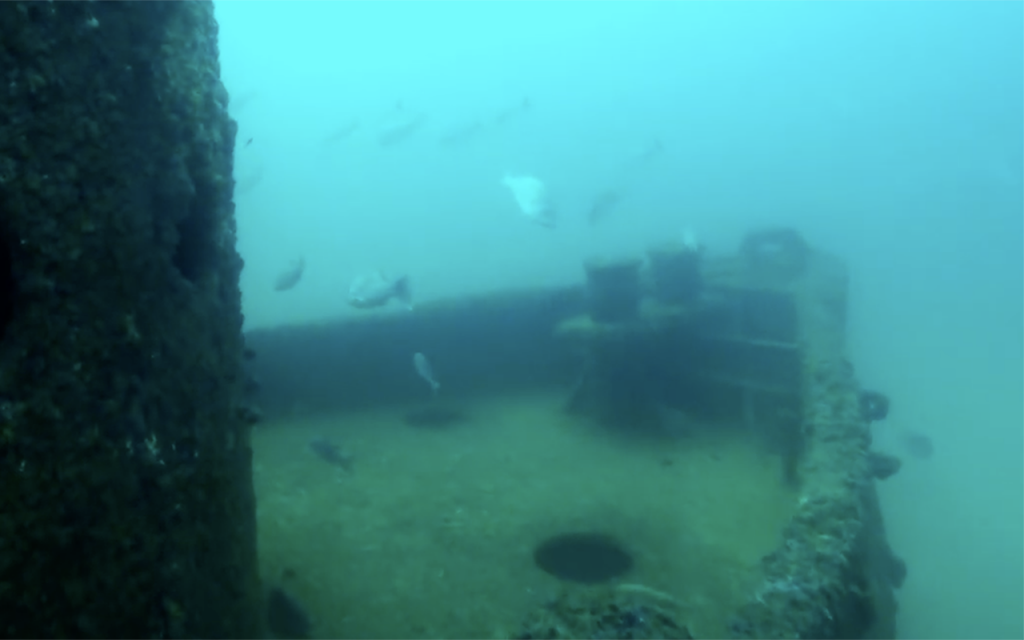
What is The Full History of This Ship
Construction and Deployment
- Built: The MV Janet was constructed in 1997. It was specifically designed as a tugboat, which typically serves to maneuver other vessels in harbors, narrow channels, or through rough waters.
- Sinking: On October 1, 1997, the MV Janet was intentionally sunk by the City of Destin to create an artificial reef. This initiative aimed to enhance marine biodiversity and provide a new habitat for aquatic life, benefiting both the ecosystem and recreational diving opportunities in the area.
Characteristics
- Dimensions: The MV Janet measures 85 feet in length and rests at a depth of 93 feet, with a relief of 30 feet. This makes it an accessible dive site for both novice and experienced divers.
- Location: The wreck is located at coordinates 30° 15.8394’ N and 086° 23.1048’ W, making it part of the Florida Panhandle Shipwreck Trail, which promotes diving tourism.
Marine Life and Diving Experience
- Biodiversity: Since its sinking, the MV Janet has become a thriving habitat for various marine species. Divers have reported seeing a diverse range of fish, including snapper, grouper, amberjack, and even a resident Goliath Grouper. The wreck is often covered with baitfish and kingfish, making it a vibrant site for underwater exploration.
- Diving Features: The wreck allows for swim-throughs and offers a structured environment for divers, complete with a waterproof dive card that provides navigation paths and information about the marine life present.
Community Impact
- Recreational Diving: The MV Janet has become a popular site for recreational divers, contributing to local tourism and the economy. Its intentional sinking as an artificial reef aligns with conservation efforts to promote marine life and sustainable diving practices.
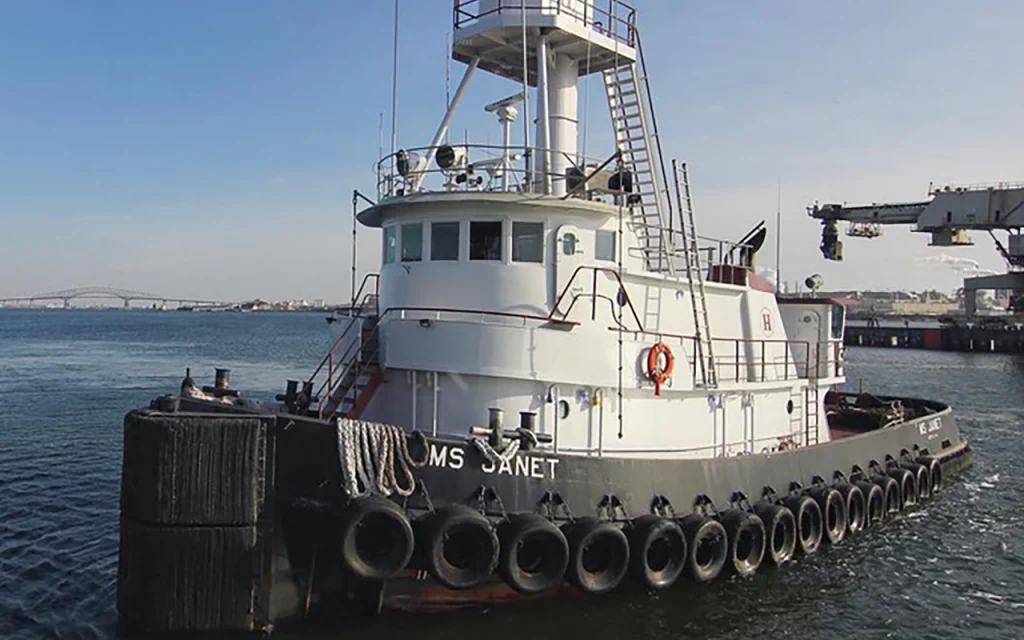
What Historical Features Can Still Be Identified on The MV Janet Wreck
Structural Features
- Upright Position: The MV Janet rests upright at a depth of 93 feet, which is a notable characteristic that enhances its visibility and accessibility for divers. This upright position allows for easier navigation and exploration of the wreck.
- Swim-Through Opportunities: The wreck provides various swim-throughs, allowing divers to explore the interior spaces of the tugboat. These areas can reveal remnants of the vessel’s operational past and offer a unique perspective on its structure.
Marine Life Association
- Artificial Reef Complex: The MV Janet is part of a concrete artificial reef complex known as Okaloosa Haven #6. This association with a larger reef structure enhances the biodiversity around the wreck, making it a vibrant habitat for marine life.
- Biodiversity Indicators: The presence of various marine species, such as snapper, grouper, and lionfish, indicates the successful establishment of the wreck as an artificial reef. Divers often report seeing a rich variety of fish and other marine organisms, which can be seen as a testament to the wreck’s role in fostering marine ecosystems.
Dive Resources
- Dive Cards: The availability of waterproof dive cards that include 3D-rendered images of the wreck, descriptions, and navigation paths enhances the diving experience. These cards also provide historical context and details about the types of marine life divers can expect to see, linking the wreck to its purpose as a dive site.
Historical Context
- Intended Purpose: Unlike many shipwrecks that are the result of accidents, the MV Janet was intentionally sunk to create an artificial reef. This planned deployment reflects a modern approach to marine conservation and recreational diving, distinguishing it from historical wrecks that may not have such a clear purpose.
What Safety Measures Are in Place for Divers Visiting The MV Janet
Dive Card and Navigation Aids
- Waterproof Dive Card: Divers can utilize a waterproof dive card that provides essential information about the wreck, including depth, a suggested navigation path, and 3D-rendered images of the site. This card helps divers plan their dives effectively and enhances their safety by guiding them through the wreck.
Ratings and Conditions
- Difficulty Ratings: The dive card includes ratings on the level of difficulty, current conditions, and depth, which are crucial for divers to assess their readiness and choose appropriate diving conditions. This information helps ensure that divers are aware of the challenges they may face at the site.
Marine Life Awareness
- Species Identification: The dive card also features images of key marine species likely to be encountered at the site. Understanding the local fauna can help divers remain aware of their surroundings and avoid any potential hazards, such as venomous species like lionfish.
Dive Community and Support
- Local Dive Shops and Guides: Many divers choose to explore the MV Janet with local dive shops that provide guided tours. These professionals can offer safety briefings, equipment checks, and support during the dive, enhancing overall safety for participants.
General Diving Safety Practices
Pre-Dive Safety Checks: Conducting thorough pre-dive safety checks on equipment and ensuring that all divers are aware of the dive plan is standard practice.
Buddy System: Divers are encouraged to use the buddy system, which involves diving with a partner to ensure mutual safety and assistance in case of emergencies.
Dive Shops That Prove Diving Trips to This Shipwreck
- Shark Quest Dive Shop: This dive shop offers trips to the MV Janet, which is located approximately 12 miles out of the Destin pass. They provide guided dives and equipment rentals.
- Emerald Coast Scuba: Known for their local dive trips, Emerald Coast Scuba organizes dives to the MV Janet and other nearby wrecks, catering to divers of all skill levels.
- ScubaTech: Based in Destin, ScubaTech offers various dive charter services, including trips to the MV Janet. They provide guided dives and equipment rental for divers.
- Dive Pros: This dive shop offers a range of diving experiences, including trips to the MV Janet. They focus on providing safe and enjoyable diving experiences for both novice and experienced divers.
- Destin Snorkel: While primarily focused on snorkeling, they also offer diving trips to the MV Janet and other artificial reefs in the area, making it accessible for divers looking for a unique experience.
North Florida Wrecks
- USS Oriskany
- USS Massachusetts
- SS Tarpon
- SS Gulf America
- Empire Mica
- USS Chippewa
- Avocet
- Black Bart
- The Vamar
- San Pablo
- USS Narcissus
- The Loftus Wreck
- The Dorothy Louise
- The Mizpah
- MV Janet
- The Eidsvag
- YDT-14 and YDT-15
- USS Strength
- Miss Louise
- The Lulu
- PC-1174
- Three Coal Barges
- USS Accokeek (ATA-181)
- El Dorado
- The Grey Ghost
- The Pete Tide II
- Red Sea Tug

